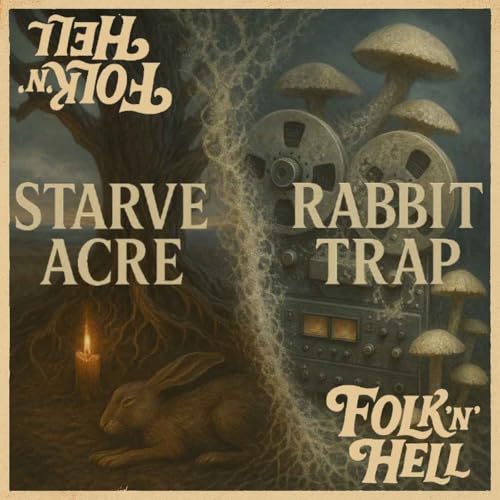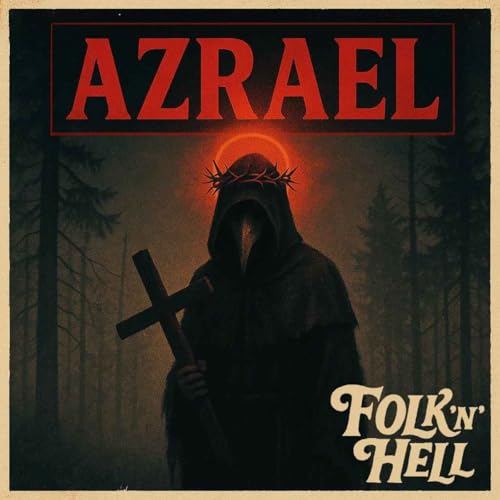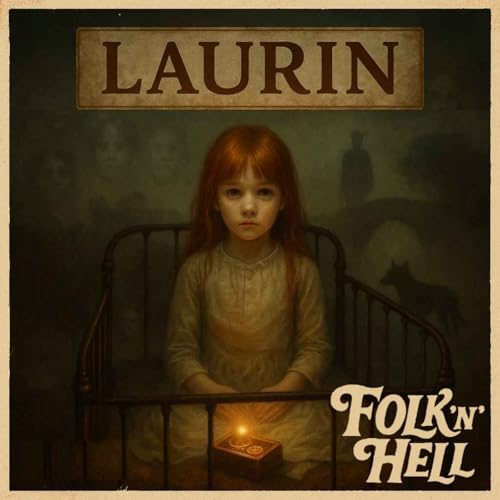In the Welsh Valleys and Yorkshire fields, something stirs. Two couples, two hauntings; one whispered through fairy rings, the other screamed through roots and ritual. Rabbit Trap offers tenderness in the face of loss; Starve Acre finds horror in what the land remembers.
Our Halloween special, a double helping of ritual, grief, and mycelial menace, pairs Bryn Chainey’s dreamlike Rabbit Trap with Daniel Kokotajlo’s devastating Starve Acre.
Different tones, same soil. One heals, the other devours.
🐇 Rabbit Trap – The Poetic RitualA sound engineer (Dev Patel) and his composer wife (Rose McEwen) retreat to the Welsh Valleys to rediscover inspiration. Instead, they find a mysterious child in the woods, and the faint pull of the fairy realm.
Blurring the line between healing and haunting, Rabbit Trap weaves changeling myth, fairy-ring folklore, and electronic soundscapes into a story of grief transfigured.
Its intimacy is hypnotic: a film where sound carries half the story, and the unseen hums just beneath the soil.
“It’s not a film about fear. It’s about finally meaning it.” — Andy Davidson
Score: 28/30
Verdict: A beautiful, immersive folk horror, poetic, unsettling, and quietly redemptive.
🌾 Starve Acre – The Brutal RiteMatt Smith and Morfydd Clark play a grieving couple drawn into an ancient ritual tied to the land beneath their Yorkshire home.
Here, loss becomes obsession and the soil answers back with cruelty. Starve Acre takes the folklore of sacrifice and drags it into raw, contemporary grief — a story of necromancy, love, and the terrible cost of devotion.
Where Rabbit Trap whispers, this one roars. Wide landscapes, heavy silences, and the suffocating inevitability of myth.
“Where Rabbit Trap gives your life back, Starve Acre asks what you’ll give up to get it.” — David Hall
Score: 24/30
Verdict: Traditional and brutal. The Wicker Man’s darker cousin, steeped in earth and loss.
🌒 Themes that Bind- Ritual & Sacrifice: In one story, ritual heals; in the other, it devours.
- Loss & Renewal: Rabbit Trap mourns the child never born; Starve Acre the one buried too soon.
- Sound & Silence: The former is composed in close-mic whispers; the latter in wind and soil.
- Fungi & Folklore: Mycelium as metaphor and menace. Rot, rebirth, and everything between.
- The Land as Consciousness: Both films remind us the ground remembers, even when we try to forget.
🔊 Sound, Style & AtmosphereIn Rabbit Trap, sound is not background, it’s the bloodstream. Recording equipment, field tapes, and the hiss of the landscape shape every emotional turn.
In Starve Acre, the sound is absence, the breath before a scream, the creak of a root giving way.
Together they form a conversation between microphones and ghosts.
💀 Folk ’n’ Hell VerdictTwo sides of the same ritual. Rabbit Trap offers poetic rebirth; Starve Acre drags you through the mud and makes you pay for it.
Together they form a perfect Halloween pairing, proof that British folk horror is alive, growing, and quietly colonising your subconscious.
Enjoyed this episode? Follow FolknHell for fresh folk-horror deep dives. Leave us a rating, share your favourite nightmare, and join the cult on Instagram @FolknHell.
Full transcripts, show notes folkandhell.com.
Hosted on Acast. See acast.com/privacy for more information.
 Dec 18 202535 mins
Dec 18 202535 mins Dec 4 202539 mins
Dec 4 202539 mins Nov 20 202538 mins
Nov 20 202538 mins 58 mins
58 mins Oct 23 202543 mins
Oct 23 202543 mins Oct 9 202546 mins
Oct 9 202546 mins Sep 25 202529 mins
Sep 25 202529 mins Sep 11 202529 mins
Sep 11 202529 mins
